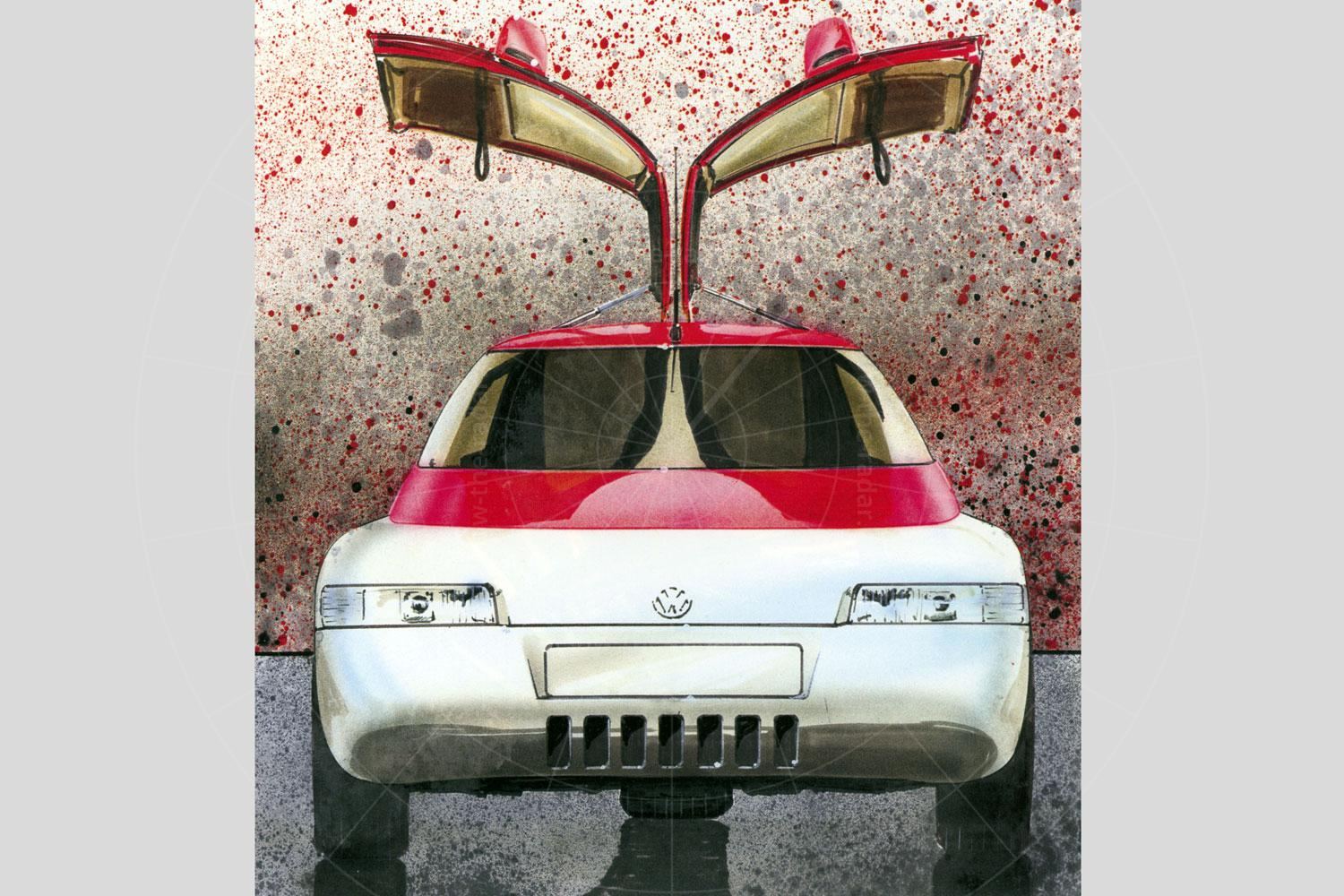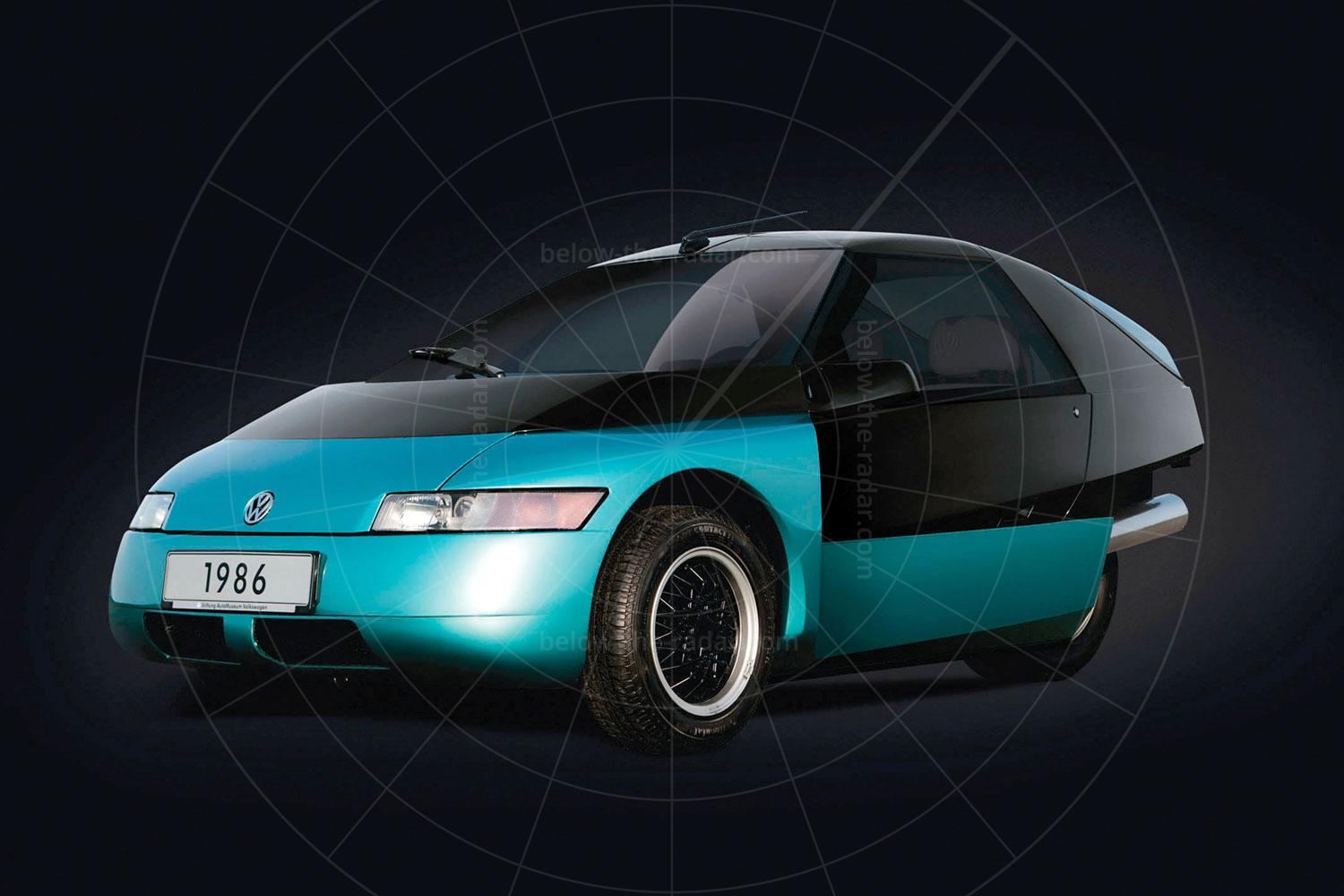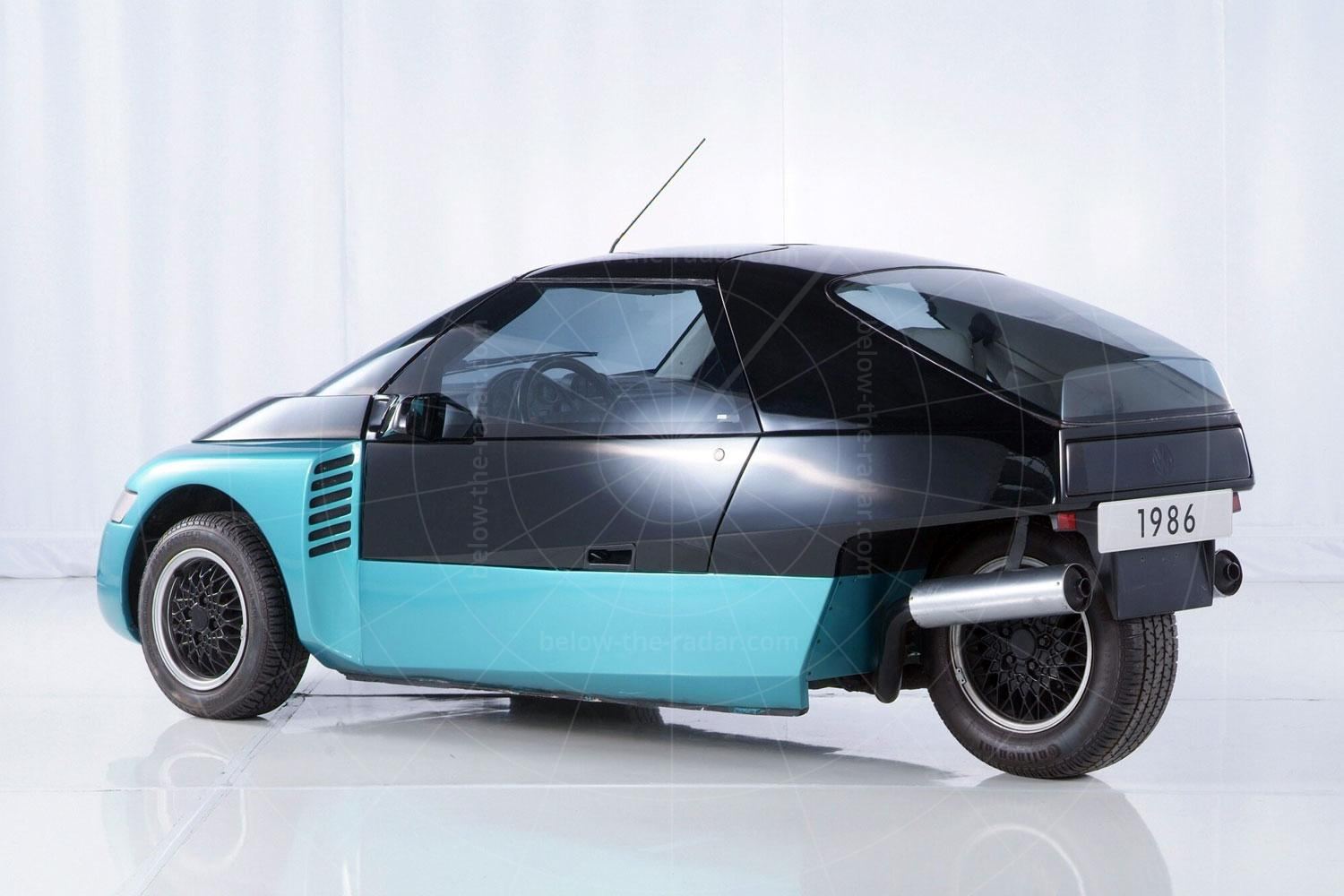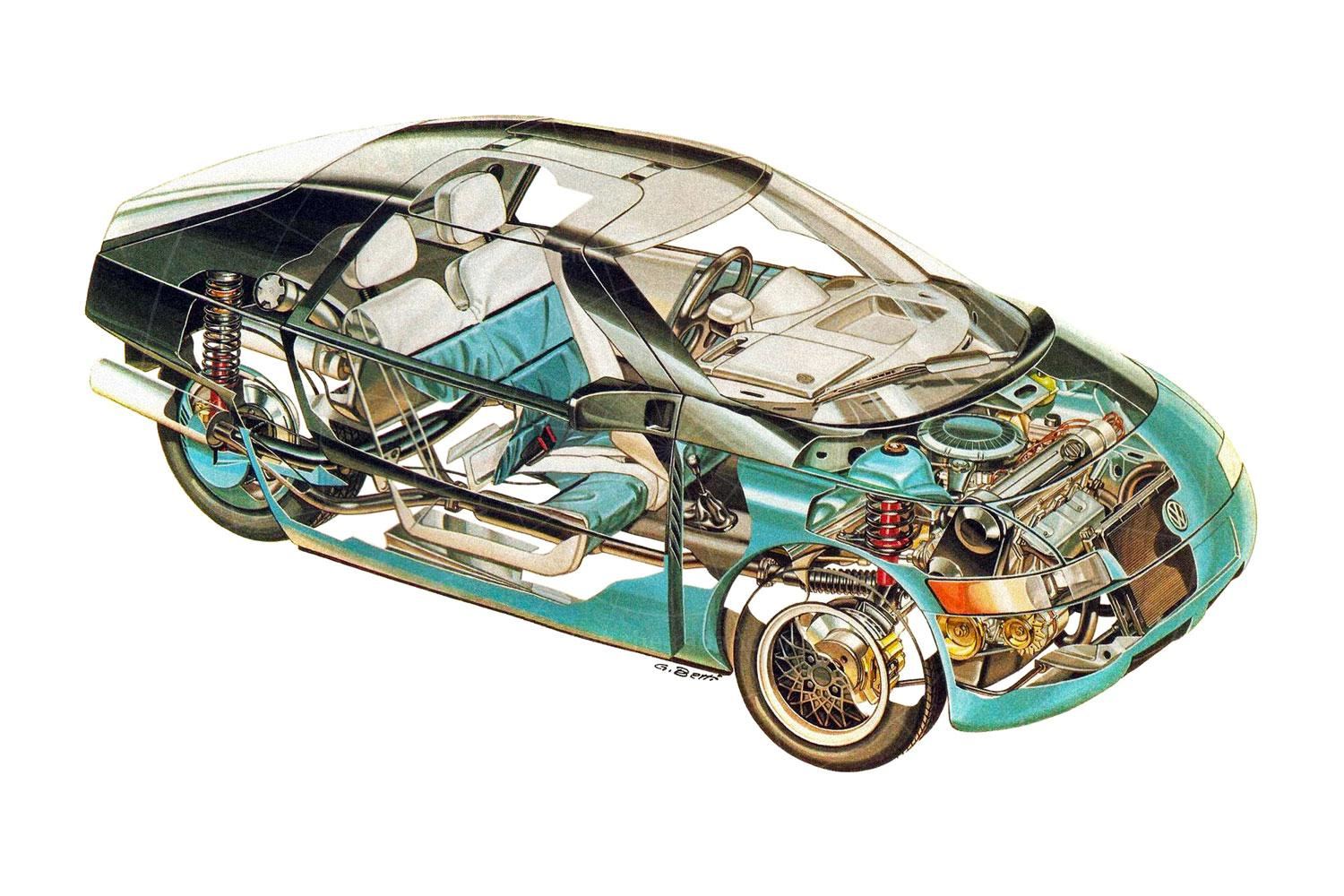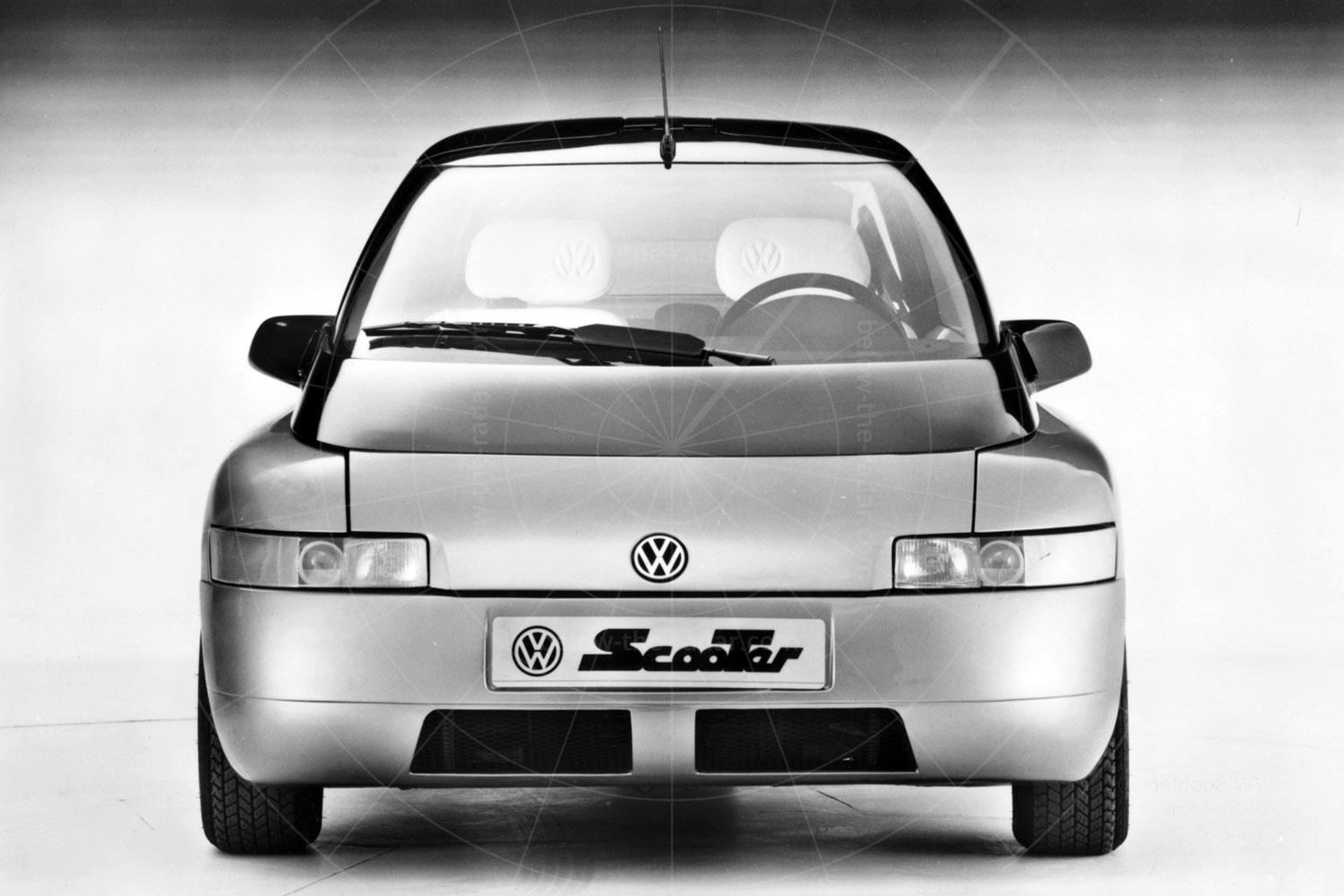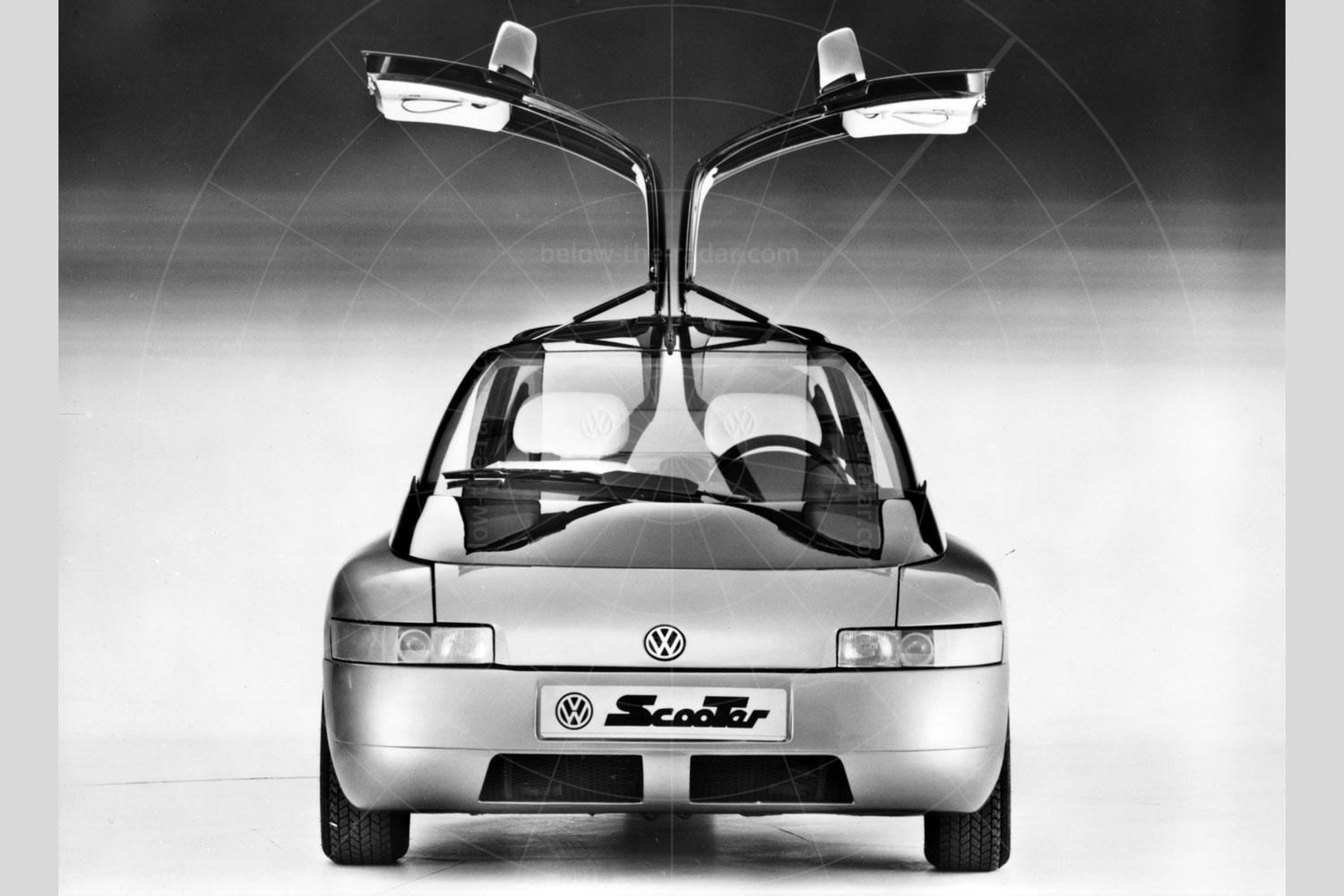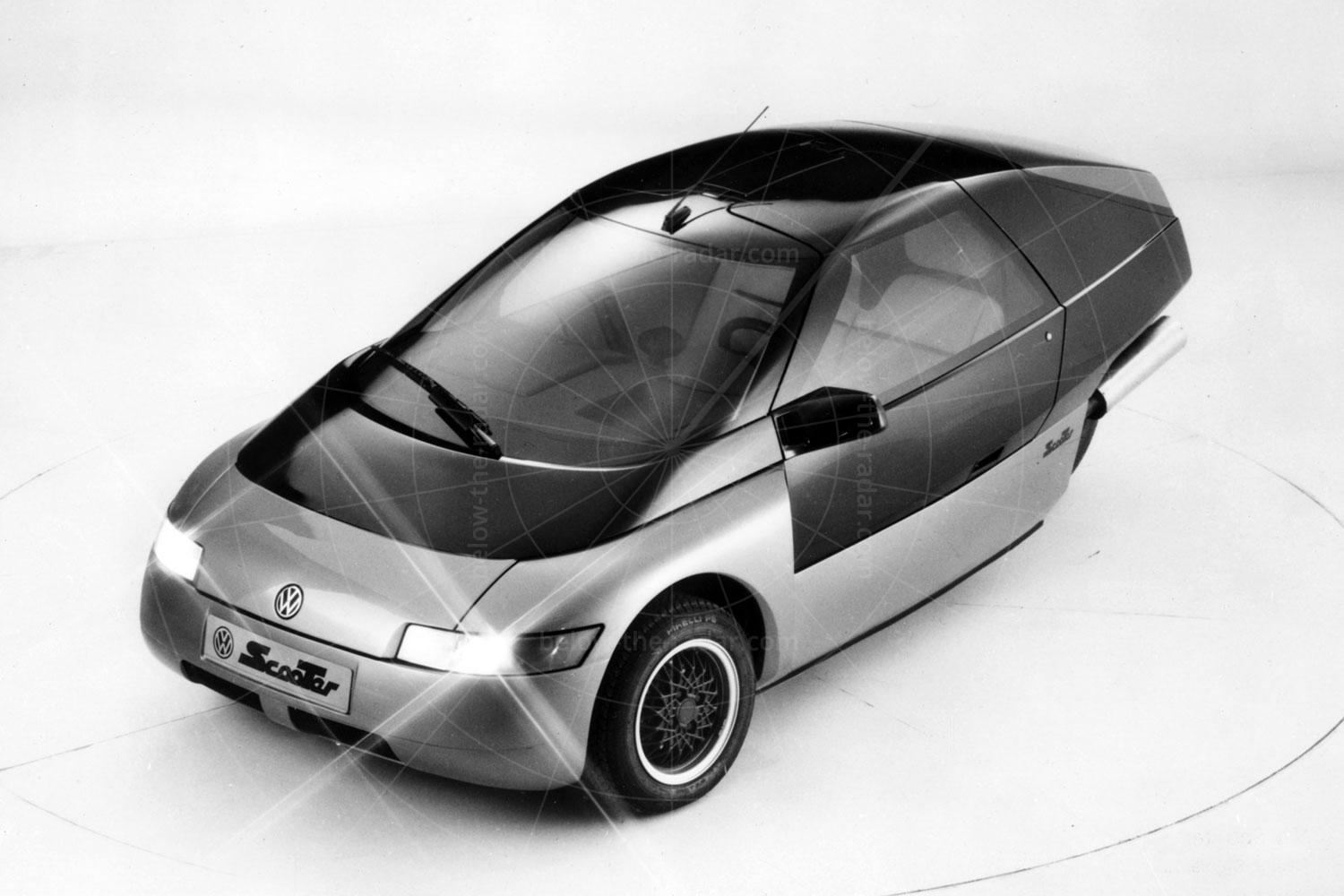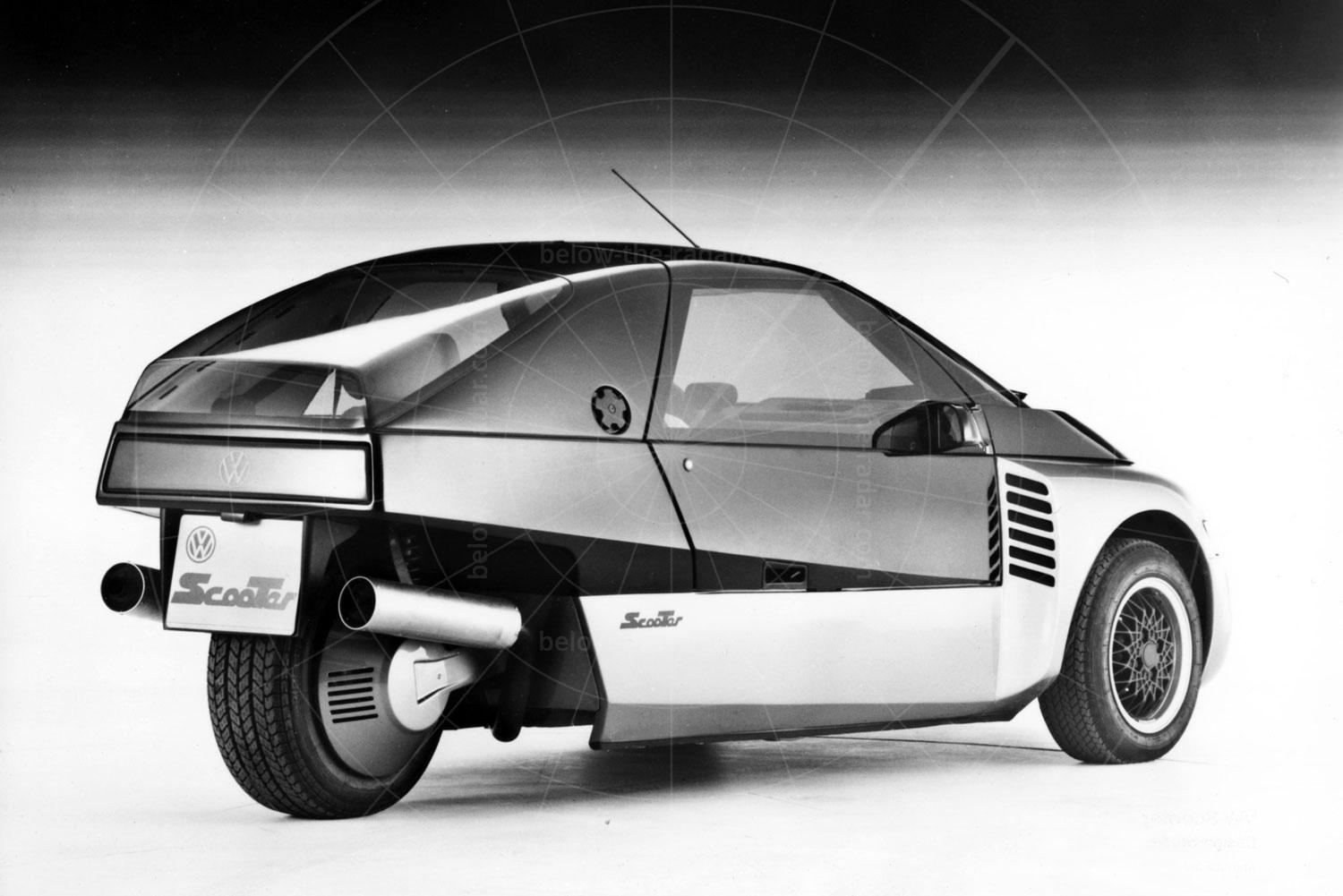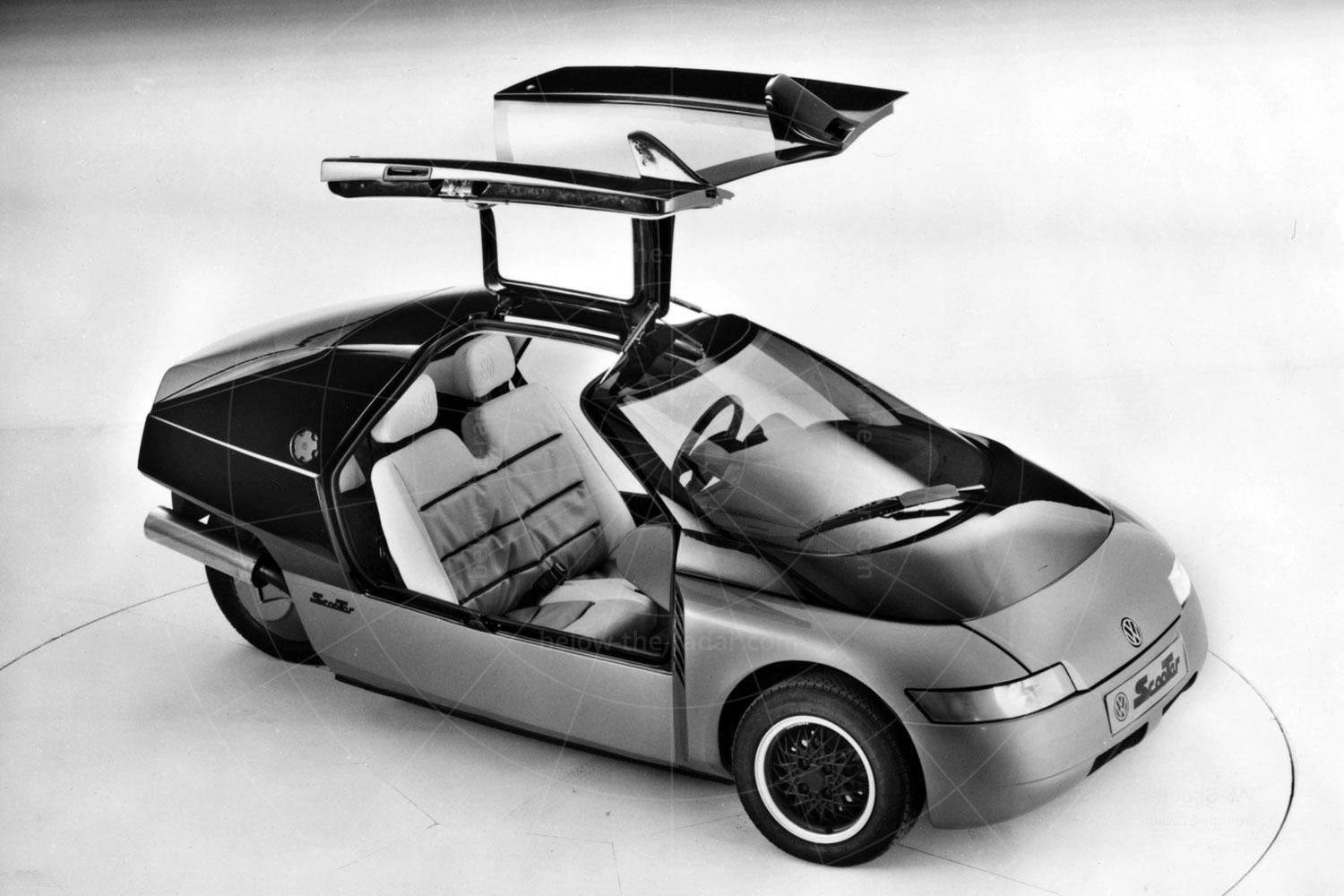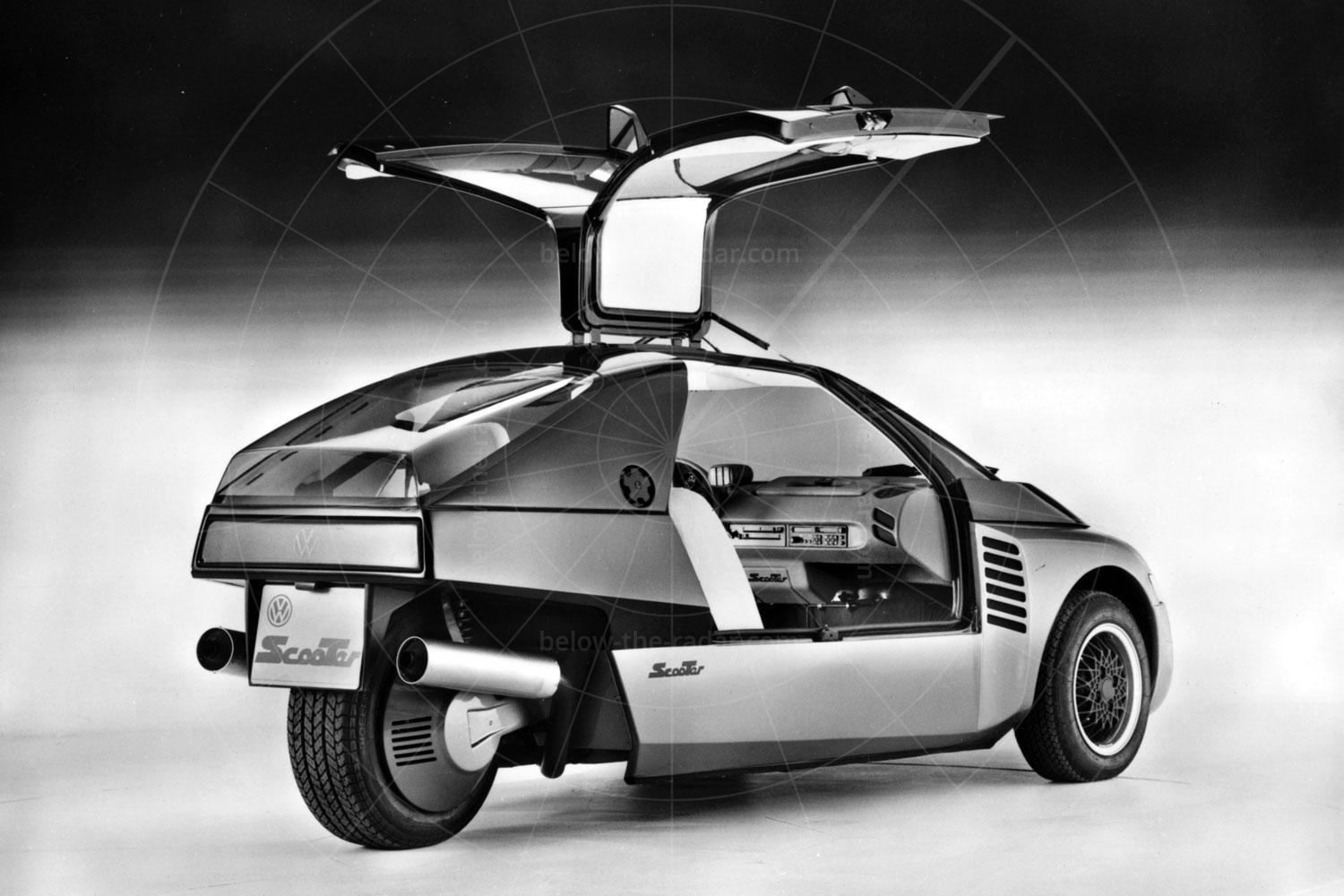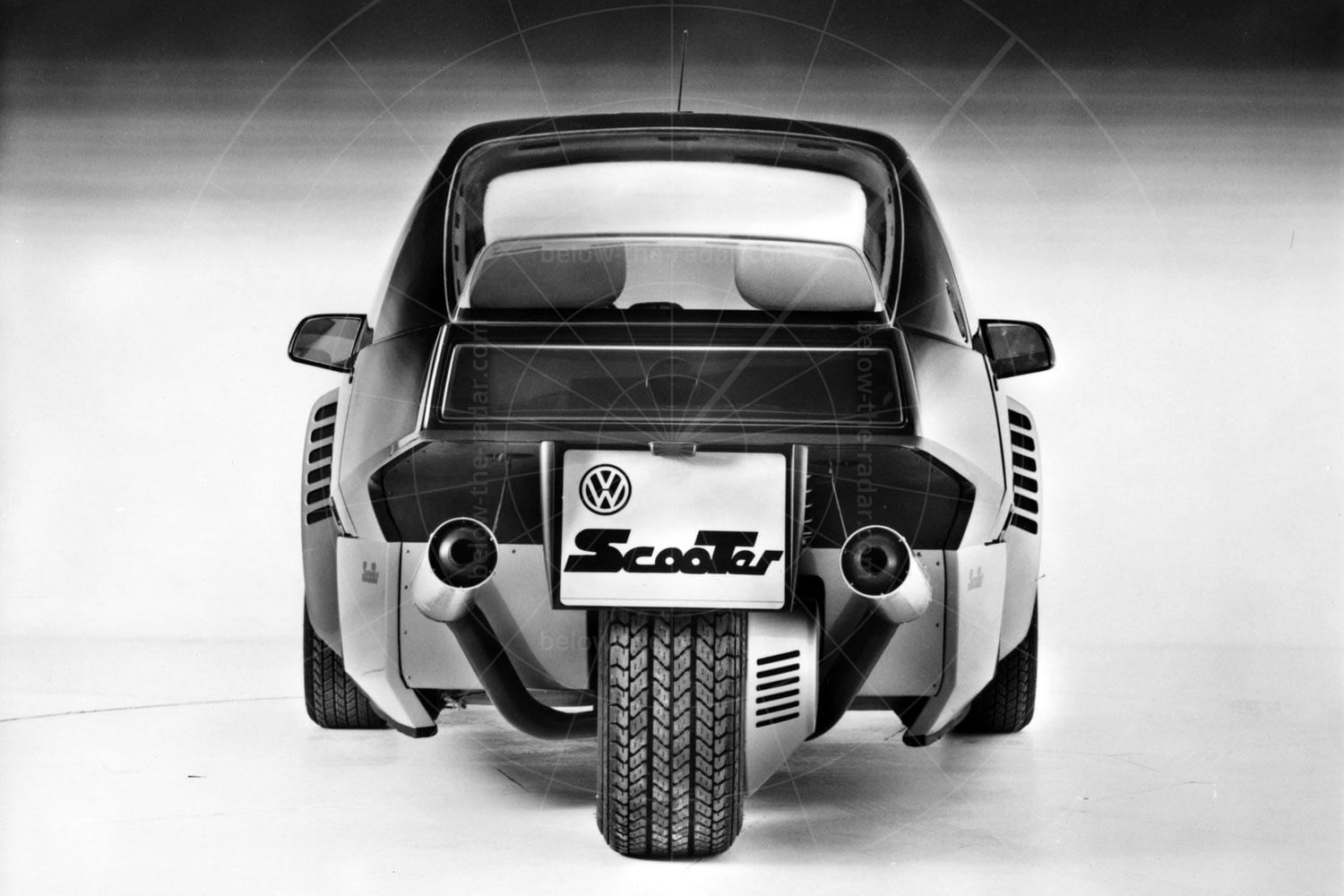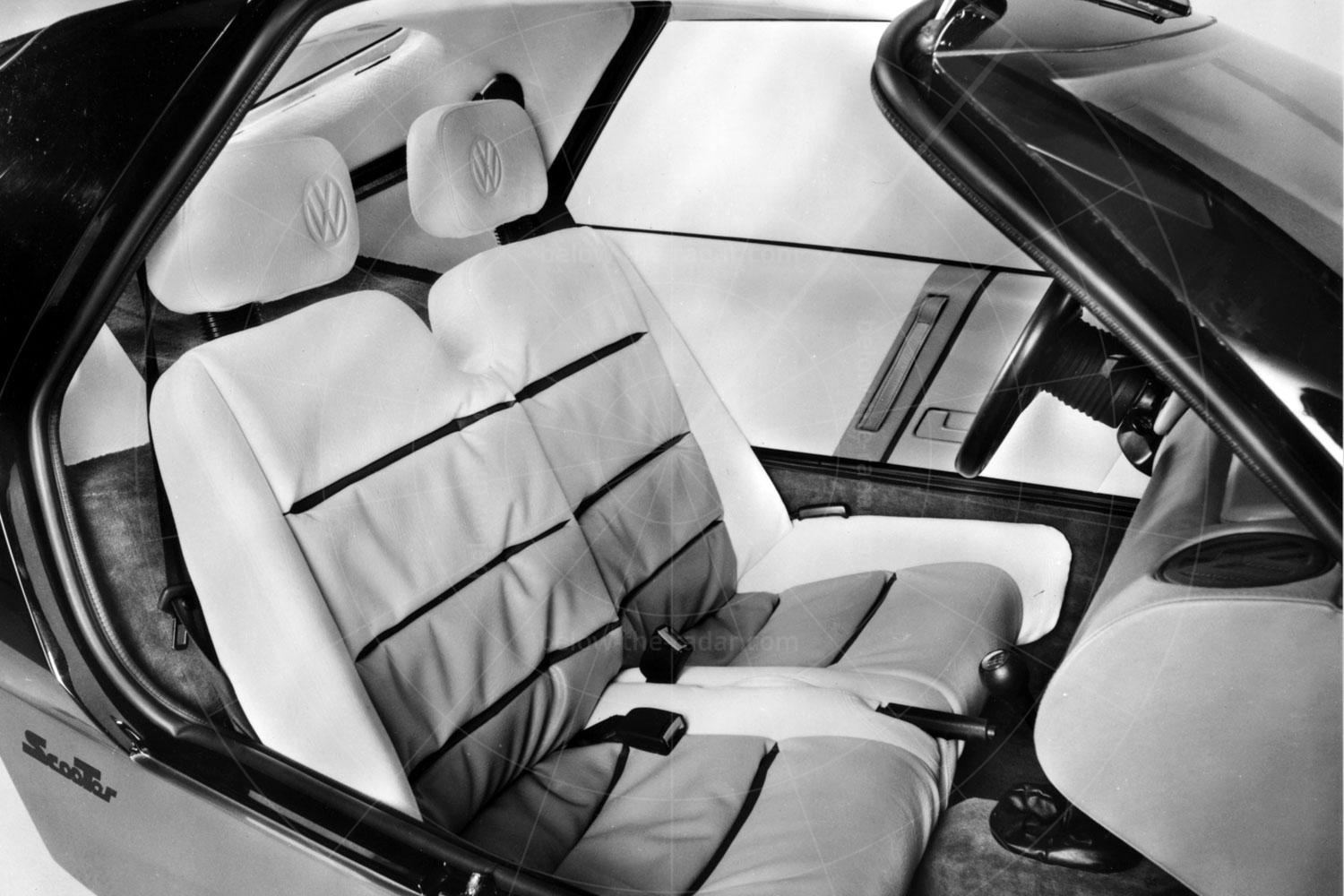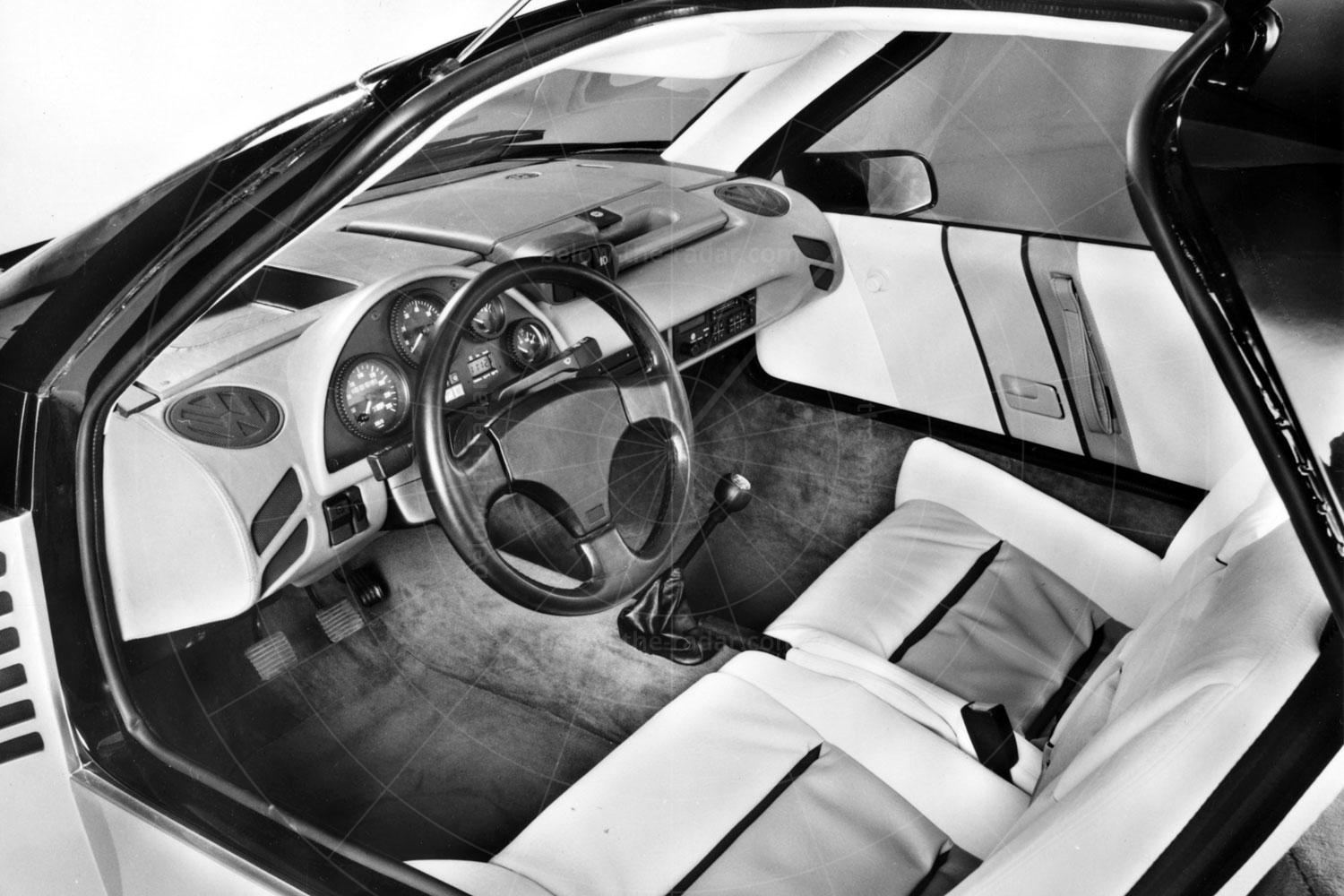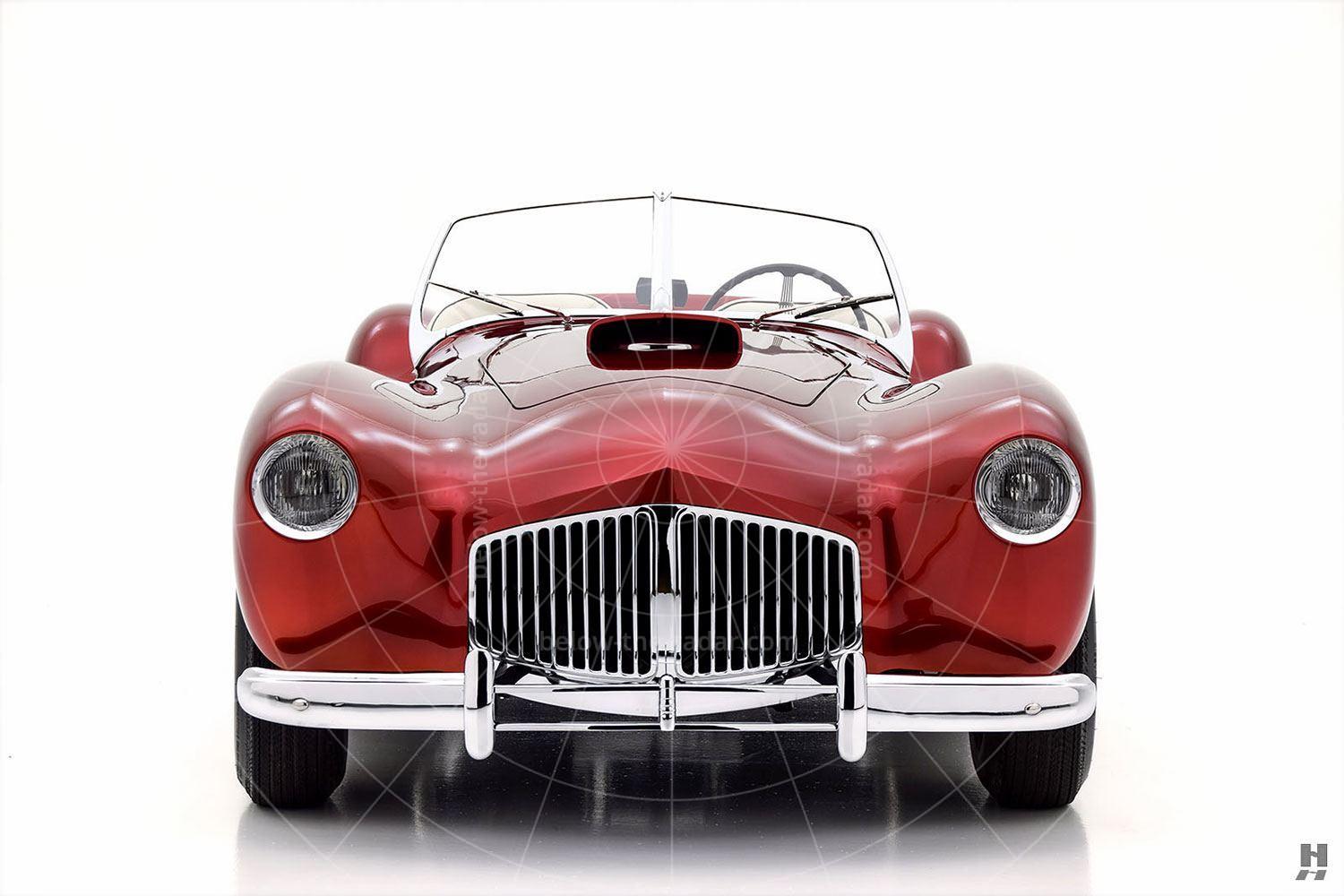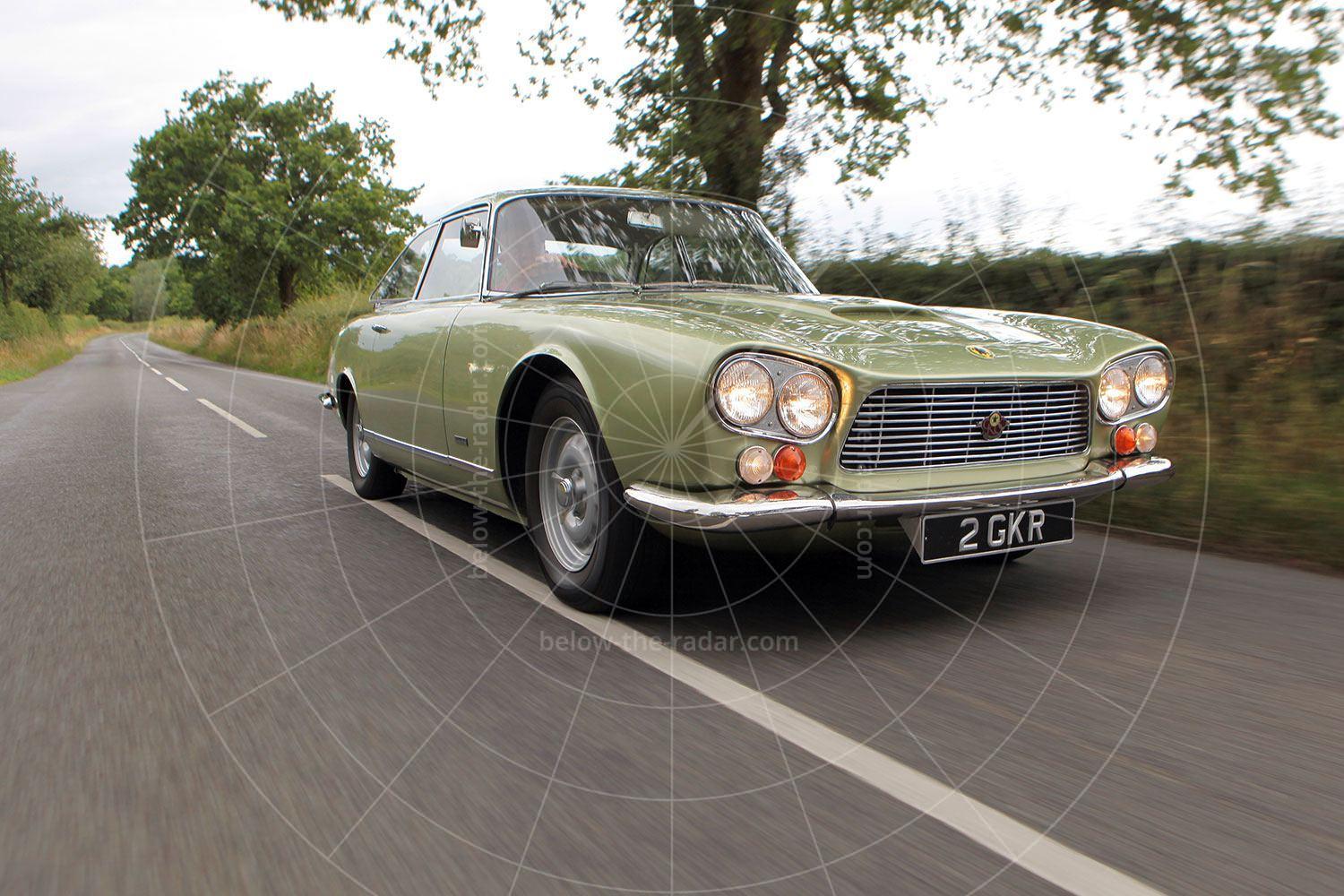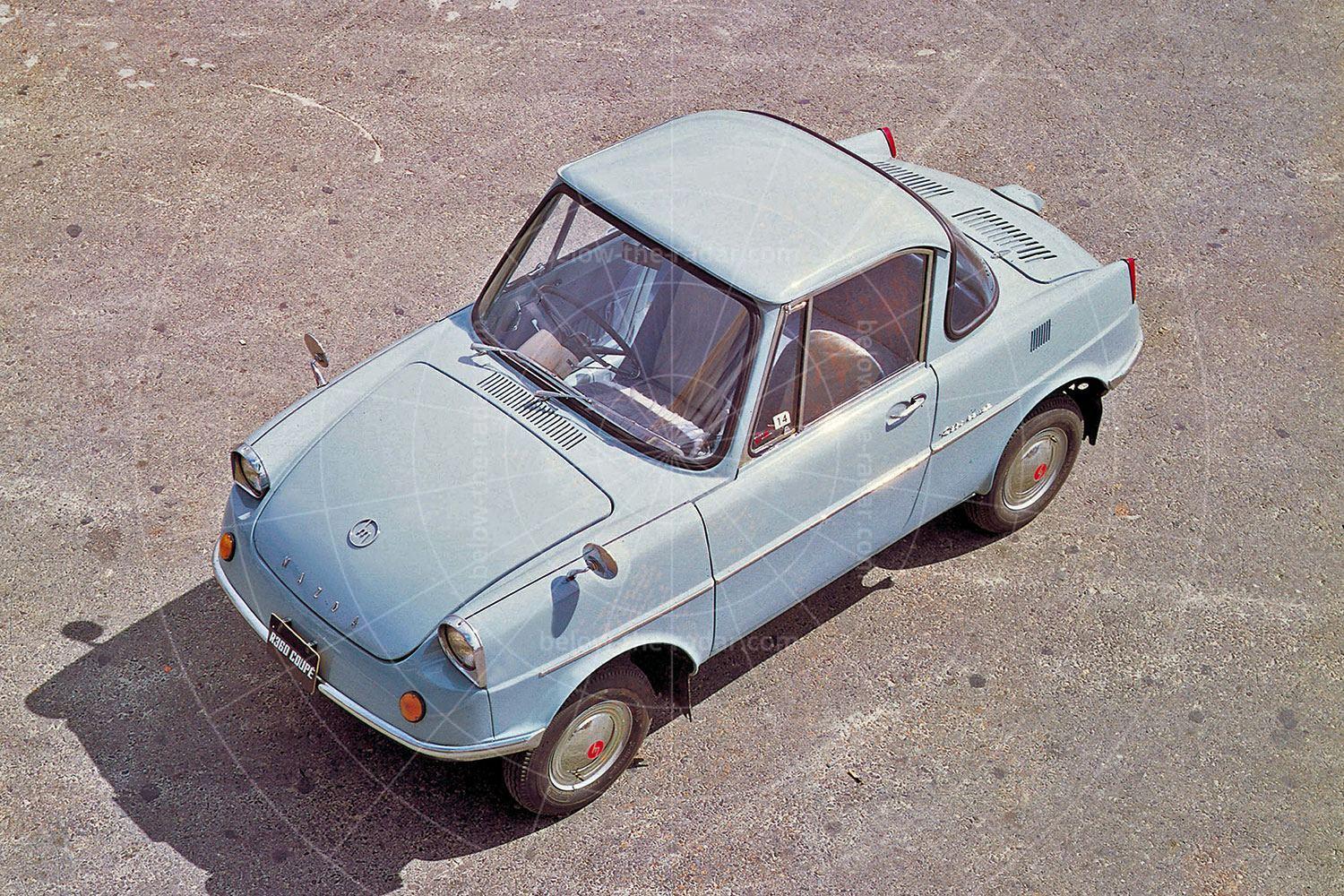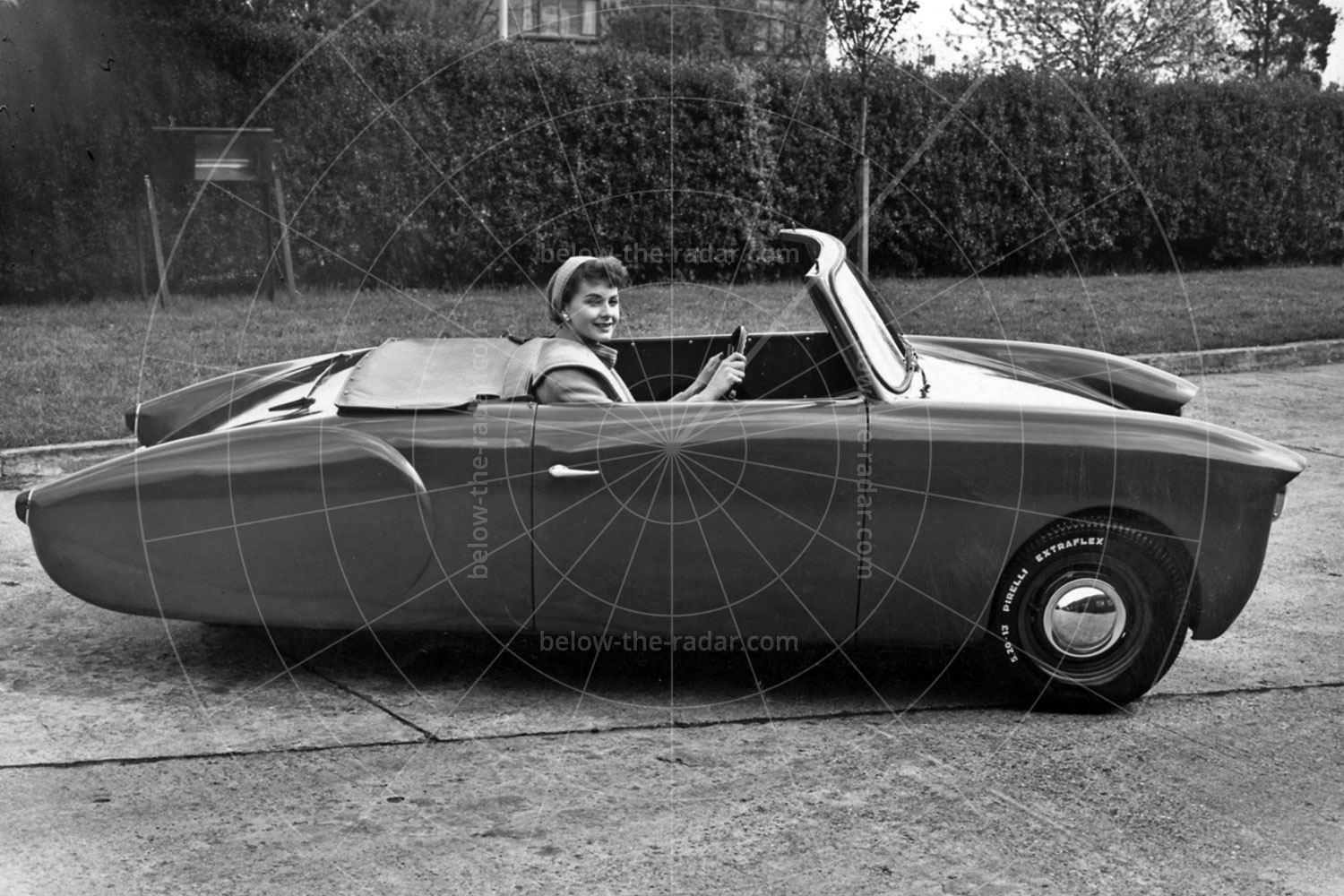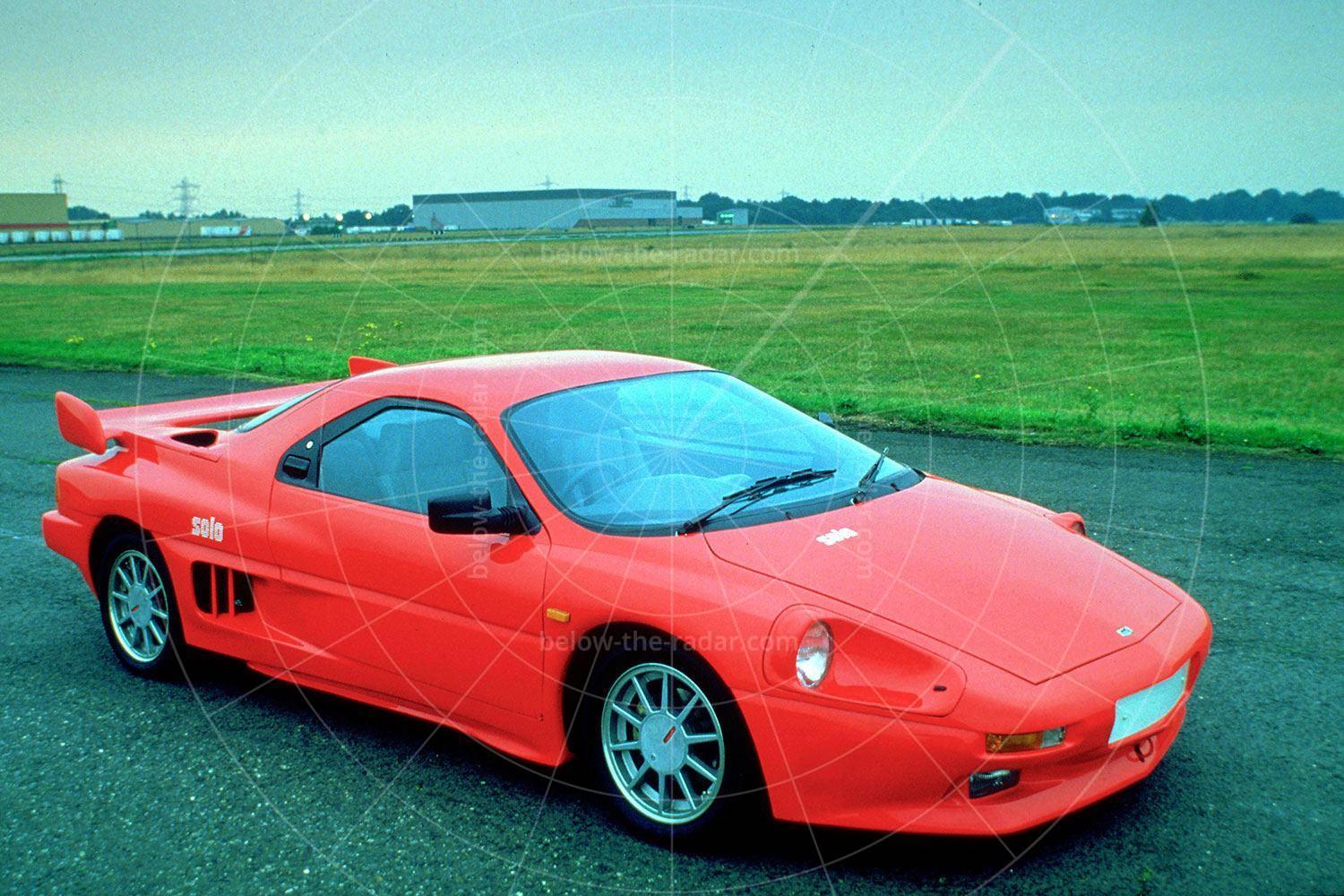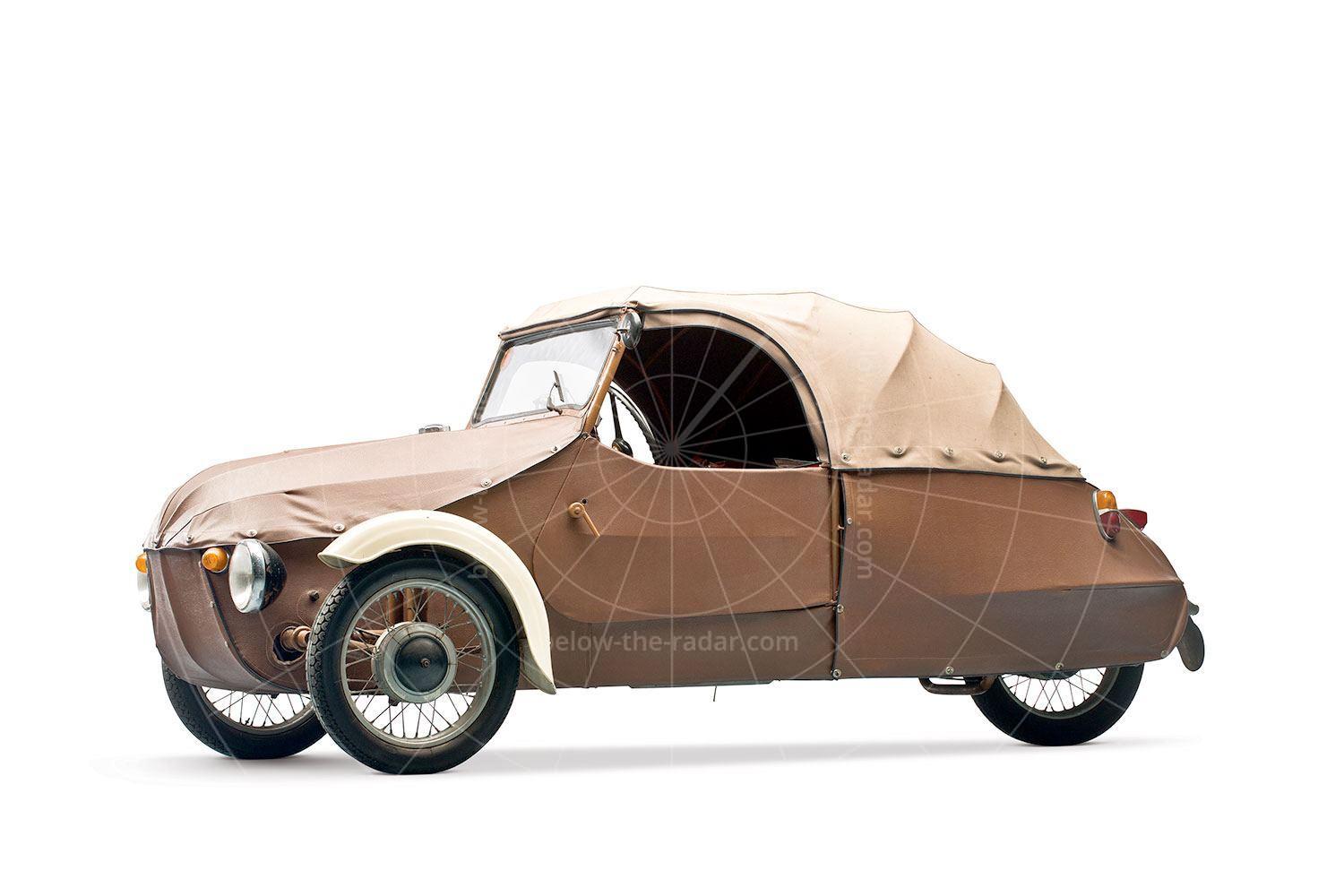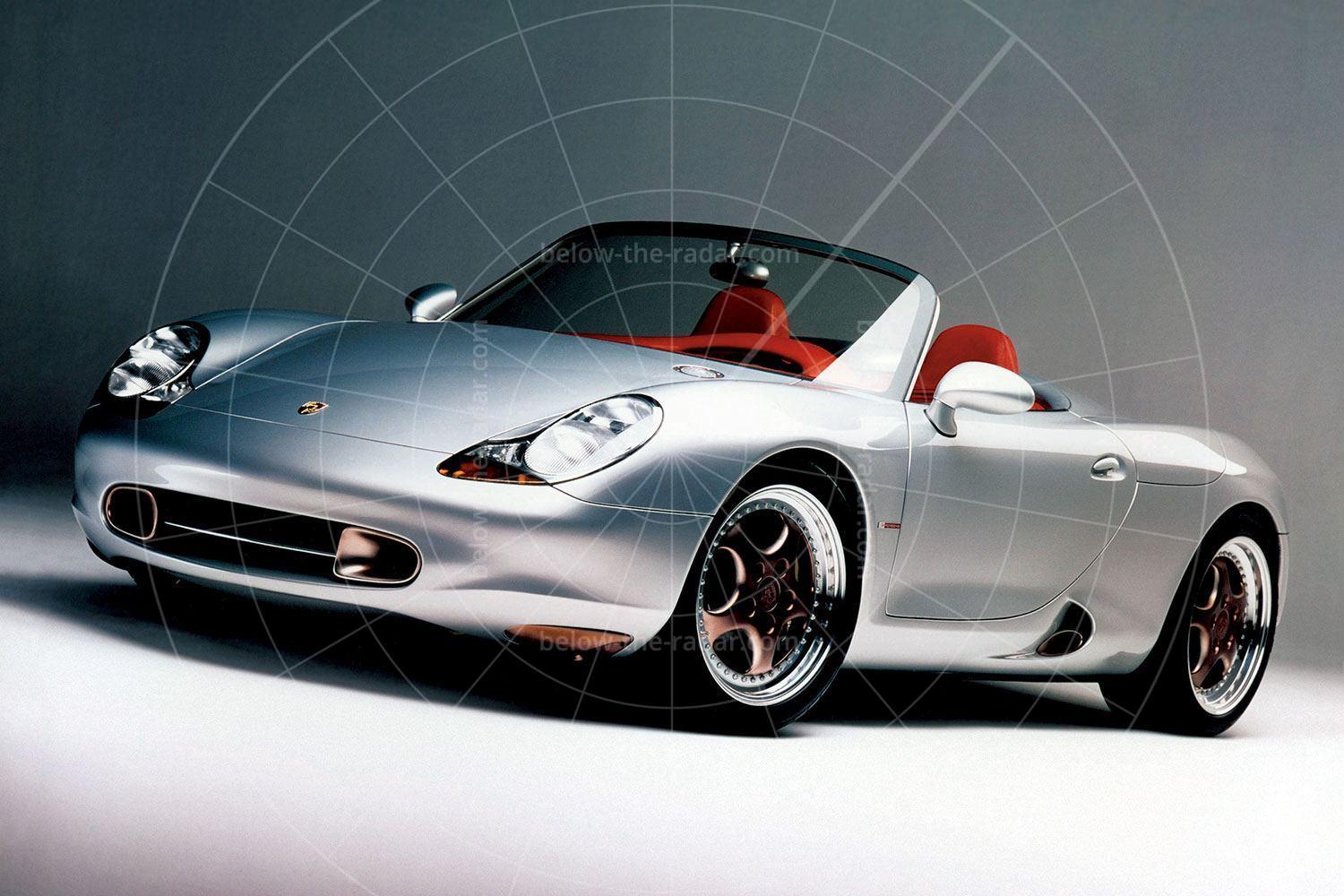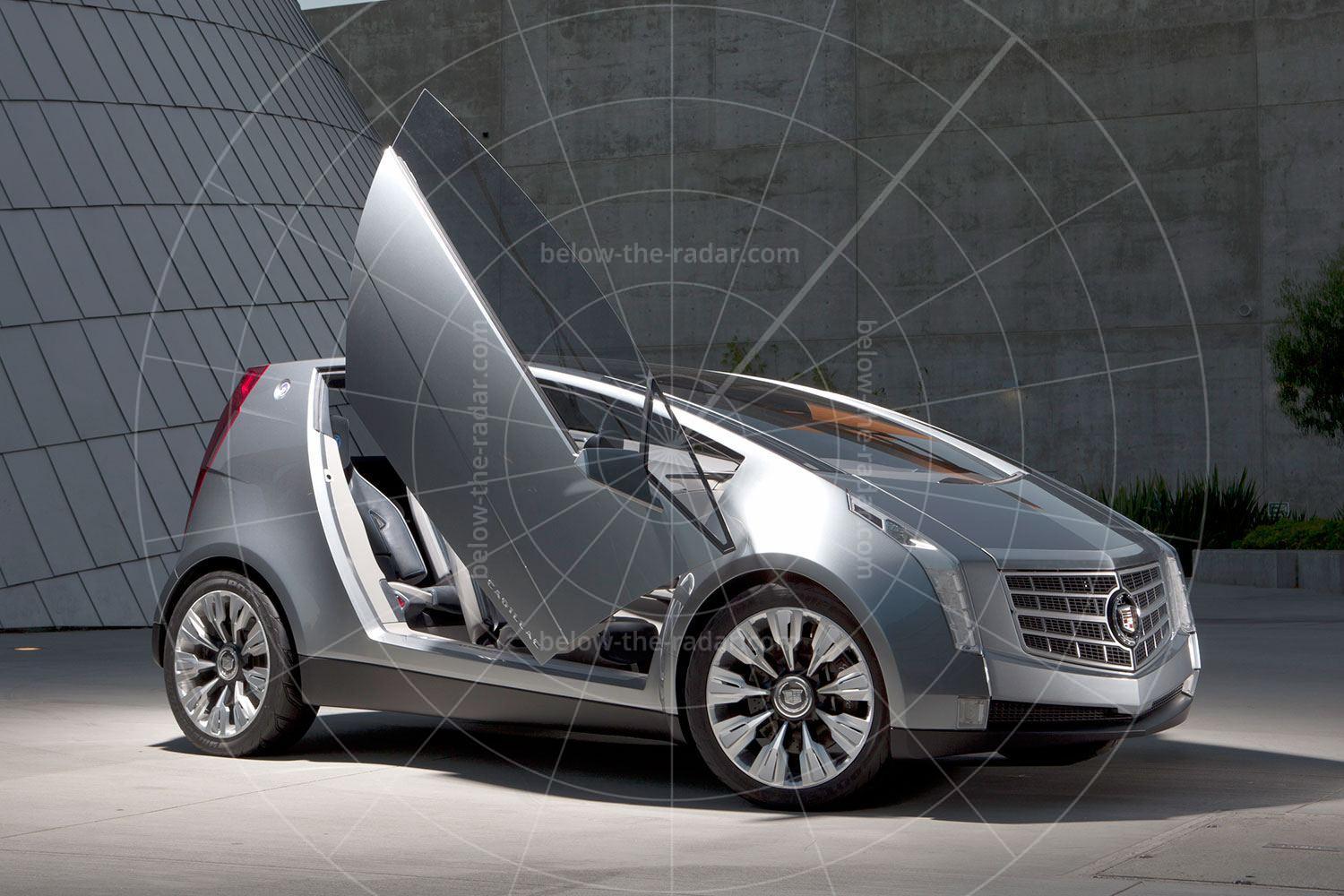When it comes to wacky design features, removing a wheel must be towards the top of the pile. So when Volkswagen, one of the world's least playful car makers, mooted the idea of producing a three-wheeled passenger car, not many people took it seriously. But the Scooter was a fully functioning concept that could have been produced independently by a specialist company such as Karmann, with which VW already had a long-standing relationship. Sadly such a move never happened…
Unveiled to the world at the Geneva Salon in spring 1986, the Scooter was a serious study by Volkswagen to see if it was possible to put a three-wheeler into production. One that could tick all of those boring boxes necessary for a showroom-ready car such as safety, packaging, performance, usability and much more.
The Scooter certainly had plenty of promise. Featuring just two seats and a front-mounted 1.4-litre Polo engine that drove the front wheels, the one prototype made was driveable, and it went down a storm with those who were lucky enough to get behind the wheel.
By the time the Scooter emerged, the Golf GTi had been on sale for a decade, and what VW wanted to do was to see if it could create the next chapter in the fun car story. Could it come up with something that was a blast to drive while being cheap to run? The simple answer was yes, because even with steel bodywork the Scooter tipped the scales at only 550kg; switching to plastic could shave the thick end of 100kg from this.
During the Scooter's development VW had run it with two different Polo engines. One was a 1050cc unit that developed just 39bhp, but the definitive powerplant would be a fuel-injected naturally aspirated 1400cc item with 89bhp on tap. That was enough to take the Scooter all the way up to around 130mph, yet in general use it could return more than 50mpg. In part that was thanks to the fabulously slippery shape; in the wind tunnel the Scooter notched up a drag co-efficient of just 0.25, while the cross-sectional area was a miniscule 1.44 square metres. No wonder it was capable of 0-62mph in just 8.6 seconds, with the standard Polo four-speed manual gearbox.
There was a lot to like about the Scooter when it came to its design. The missing wheel was the obvious thing to home in on, but then there were the gull-wing doors, the two-tone blue and black paint finish and the ultra-modern wind-cheating nose.
Hidden in that nose was the entire mechanical front end of a Polo, which meant the engine, transmission, MacPherson strut suspension and disc brakes, along with 13-inch wheels; at the back there was a swing arm that held a 15-inch wheel in place. Just 8cm narrower than a Polo (at 1498mm), the Scooter was also 480mm shorter at 3175mm, while 70% of the weight was over the front wheels, things balanced out marginally by the 7.7-gallon fuel tank in the rump.
Work on the Scooter had started in April 1984, and it had led to much head scratching. The man behind the project was Dr Ulrich Seiffert, whose six-strong team considered using motorcycle engines, a tandem seating layout and four wheels, along with all sorts of other distinctly unVolkswagen-like configurations. Having settled on a three-wheeler, the next task was to analyse some of the other such vehicles that were already on the market, especially some of the various US-built trikes.
What was never considered was a single-seater, because some semblance of usability was a key part of the brief. As such it had to be driveable in all weathers and also capable of carrying luggage; as a result the Scooter had a 210kg payload. The Scooter also had to be capable of complying with European 30mph crash test regulations, so it had to feature a crumple zone that didn't rely on the occupants' compressibility.
When the Scooter was unveiled, Seiffert commented: "The Scooter is a classic understeer car. It was fascinating to see what we could achieve in terms of stability, steering and braking because it is a three-wheeler." What he didn't say, but which became clear to those who drove the concept, was that the Scooter was perfectly balanced with just the driver on board, but once someone had clambered into the passenger seat, the mechanical layout meant that the weight distribution was then offset.
Clearly a man who liked his own space, Seiffert added: "The idea was to create a car which you can drive quickly and economically to a destination, preferably with the sound system on. With the Scooter you have an excuse not to take three or four people with you – particularly not those wanted as passengers."
In a bid to make the Scooter as invigorating to drive as possible, the gull-wing doors were detachable by unhooking the gas struts and pulling each door out of its hinge. However, there was no way of storing them inside the car, so you had to leave the doors at home and hope the rain didn't arrive before you returned home. While the rear window was fixed on the concept, the aim was to incorporate a removable item if the car made production, to make the Scooter as open as possible.
With its heavily tapered glasshouse, the Scooter's cabin wasn't over-endowed with space, the two occupants having to be on very friendly terms. A standard Polo dash was initially installed (later switched to a bespoke item) and the generously proportioned windscreen ensured excellent visibility, as well as allowing the cabin to feel rather more roomy than it really was.
Where the Scooter really excelled was with the driving experience because it handled superbly, was rapid, rode well and thanks to the fitment of a 235/55 15 tyre at the back, it was also very stable. Best of all, while it was fast it was also frugal, thanks to that 550kg kerb weight. Even in 39bhp form with the 1050cc engine it could do 100mph and return almost 60mpg.
Seiffert noted: "I would like to see the Scooter in production, and if we contracted it out to a smaller manufacturer then it might work for us. We would like to get the people who have the money to buy an expensive motorbike, but who do not want to be too exposed to the elements and prefer the safer feeling of a closed bodyshell." But sadly it wasn't to be, although three decades later Volkswagen did give us the XL-1, which was a kind of modern-day Scooter, albeit one that was out of reach for most.

